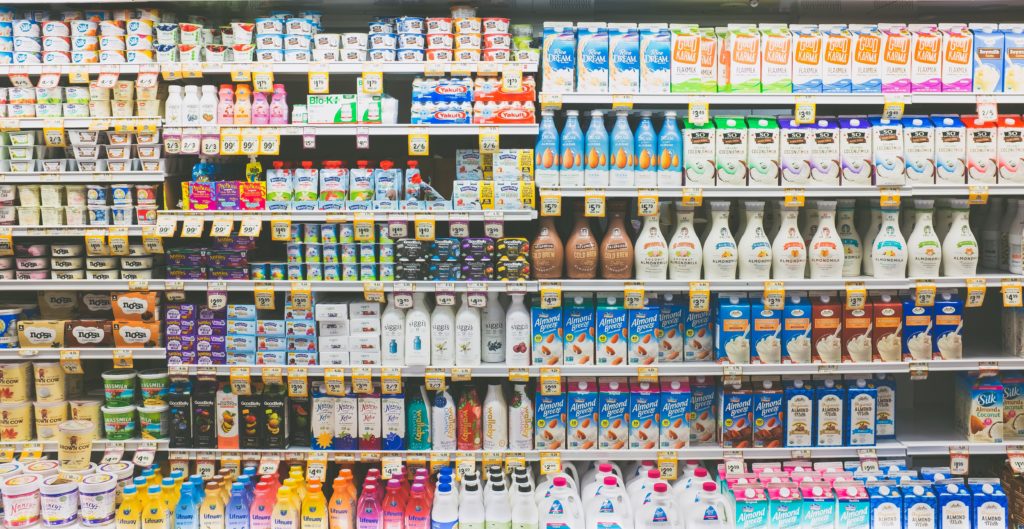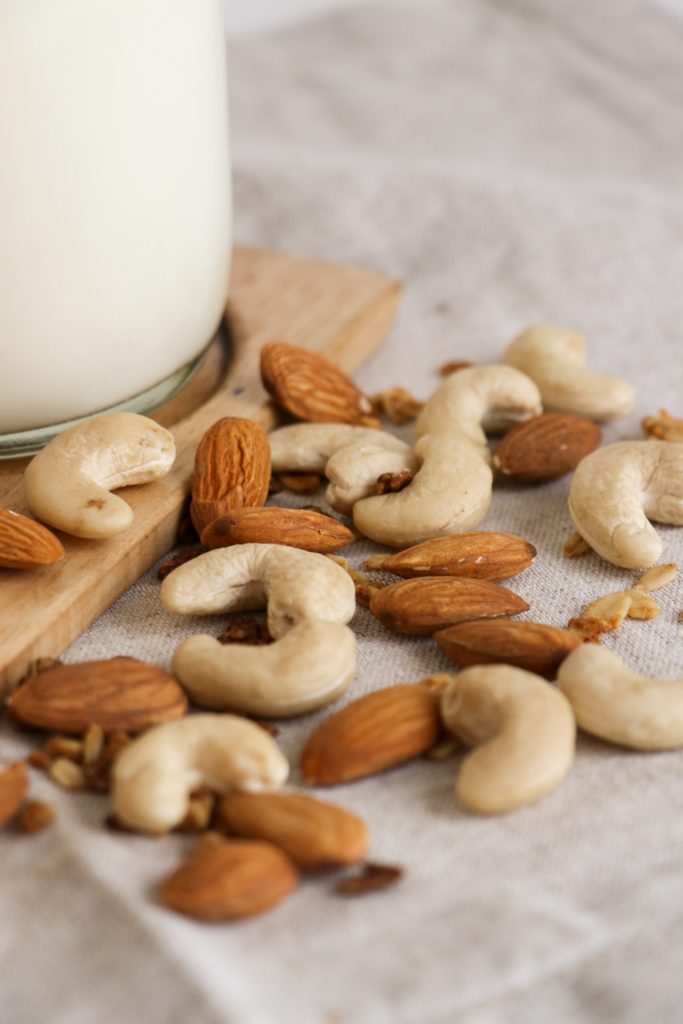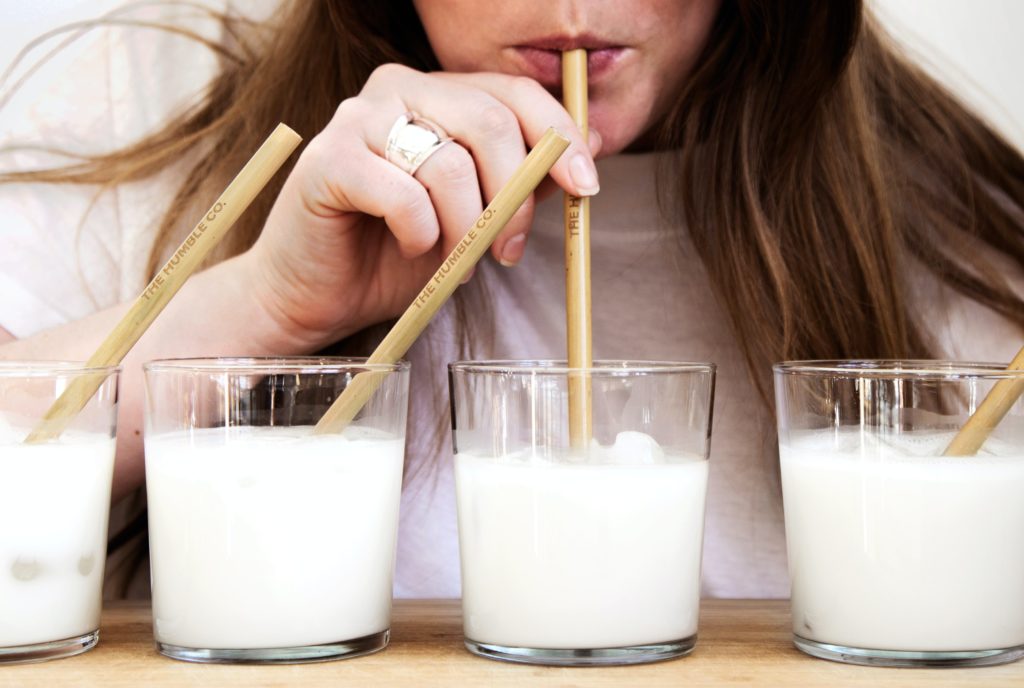Non-dairy milk alternatives are more popular than ever before. But how do these “milks” compare nutrition-wise? Are some better than others? Read on to find out!

In the past 20 years, data shows that there has been a general decline in cow’s milk consumption and an increase in the use of non-dairy milk alternatives like soy, oat and nut milks. Between 2017 and 2019, sales of non-dairy alternatives in the US grew 14%. In Canada, oat milk is one of the fastest growing alternatives with a 244% sales increase from 2018 to 2019 alone. It’s clear to see the growing popularity of milk alternatives from the wide array of ways to make your latte at most coffee shops nowadays.
Why are non-dairy milk alternatives so popular?
There are a number of reasons why consumers may be looking for dairy-milk alternatives:
- they have milk allergies or lactose intolerance
- they are following a vegan or plant-based diet
- some have perceived health benefits of non-dairy alternatives
- they have concerns for the ethics of modern dairy farming practices
However, it is important to note that cow’s milk is traditionally a good source of many nutrients. At the same time, milk contains low amounts of sugar and saturated fat. With an increasing use of non-dairy milks, it’s important to consider how their nutritional values compare, both to each other and to cow’s milk.

The research on non-dairy milk
A recent study set out to find out just that! Researchers in the US compared the nutrient value of skim milk and five of the largest selling non-dairy milk alternatives: almond, soy, coconut, cashew and rice milk. Their analysis focused on nutrients that are typically under-consumed by the general population (i.e. potassium, fiber, magnesium, calcium, vitamin A, vitamin D and phosphorus) as well as those that are often over-consumed (i.e. added sugar, saturated fat and sodium).
Key results
In some cases, both dairy and non-dairy milks had a “nutritional edge” over the other. On the other hand, there were instances where the two were comparable in nutrition:
Non-dairy milk alternatives:
- were a better source of vitamin E and B12 than regular cow’s milk when fortified. (i.e. had these nutrients added to them).
- contain little to no saturated fat (with the exception of coconut milk). However, it’s believed that saturated fat from dairy does not pose the same risk for heart health as other sources. Studies have actually found a protective effect of consuming dairy products for diabetes, heart disease and obesity risk.
- soy and almond milk contain small amounts of fiber, whereas cow’s milk does not.
Dairy milk:
- does not contain added sugar. More frequently, flavoured or sweetened versions of non-dairy alternatives are consumed. These beverages contain about 1-2 tsp of sugar per serving. Flavoured skim milk is also favourable over flavoured almond milk. It still has almost half the amount of added sugar, plus more protein, potassium and phosphorus!
- is often cheaper. Although this study was done in the US, the findings are relative to Canada. Non-dairy milk alternatives are usually higher in price.
Dairy and non-dairy milk were comparable:
- when non-dairy milks were fortified, they had similar levels of vitamin A, vitamin D and calcium as cow’s milk.
- soy milk was the only alternative that had comparable levels of potassium and protein as cow’s milk. The others had much lower amounts.

Which “milk” should I choose?
To decide whether non-dairy milks are a good substitute for cow’s milk, consider why you are looking for an alternative:
For an alternative beverage with a similar nutritional profile to milk: unsweetened fortified soy milk is the only non-dairy alternative that is comparable. You could also consider a lactose-free milk if you have an intolerance to dairy, but don’t follow a plant-based diet.
For a plant-based beverage where nutrient content isn’t a major concern (i.e. using it as a coffee creamer, you have an otherwise adequate diet): non-dairy milks are an acceptable substitute. However, opt for one that is unsweetened and fortified with Vitamin A, D, B12 and calcium.
For growing children: Health Canada advises that fortified soy milk is the only non-dairy alternative that has adequate nutrition to support growth. Even then, fortified soy milk is not suitable as a main milk source for children under two years of age.
What about oat milk?
As oat milk has only become more popular recently, it wasn’t included in the original study. However, oat milk can be a good nut-free or plant-based alternative when nutritional value isn’t your major concern.
Compared to dairy and non-dairy alternatives, oat milk tends to have more calories and fiber, and less protein per serving. Like other non-dairy milks, be sure to choose unsweetened, fortified varieties. Keep in mind that homemade oat milk will not be fortified and will contain less of certain nutrients compared to store-bought.

The bottom line
The nutritional value of dairy and non-dairy milks can be drastically different. Soy milk is the only non-dairy beverage that is nutritionally comparable to cow’s milk. Non-dairy milks can be good alternatives in many situations – just be sure to choose one that best meets your needs.
I’d love to hear your thoughts or answer your questions in the comments below! For more nutrition posts like this one, click here!
